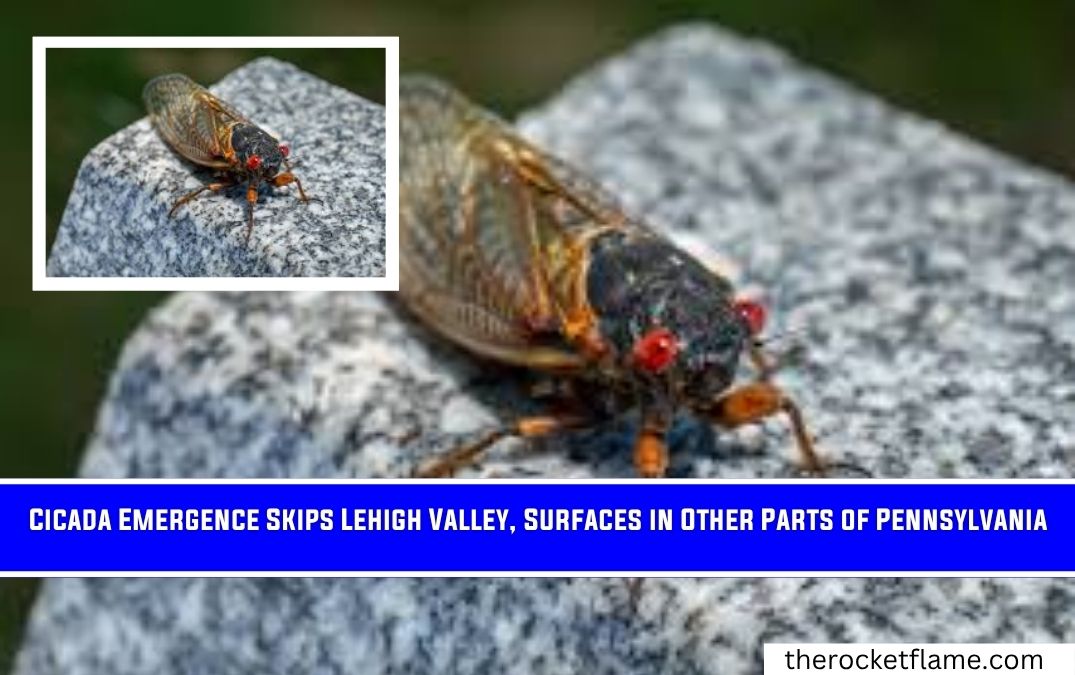Pennsylvania residents are witnessing the magical emergence of periodical cicadas in 2025 — but not in the Lehigh Valley. While large swarms are appearing in other parts of the state, experts say the Valley will once again sit out this 17-year natural event.
What Happened
This spring, parts of Pennsylvania are experiencing a mass emergence of periodical cicadas from Brood XIV — also known as “The Great Eastern Brood.”
However, the Lehigh Valley won’t see any of these insects, which only emerge after spending over a decade underground.
Key Details
- Cicadas from Brood XIV are emerging in central Pennsylvania and beyond.
- The Lehigh Valley is not part of this brood’s territory.
- Cicadas appear when soil temperatures hit 64°F.
- They mate, lay eggs, and die within weeks, enriching the soil.
Periodical cicadas are black with red eyes and orange wings, smaller than their annual counterparts. These insects typically appear in overwhelming numbers to ensure survival.
Reactions or Statements
Marten Edwards, a biology professor at Muhlenberg College, described the event as “inspiring of awe” and “kind of magical.”
He explained that the appearance of cicadas in mass quantities isn’t random — it’s a strategic survival trait.
“They’re not harmful,” Edwards added. “They don’t sing at night, and any noise during the day is harmless.”
Investigation or What’s Next
Brood XIV cicadas last emerged in 2008 and are now reappearing across a stretch from Georgia to Ohio, including parts of central Pennsylvania like State College.
A few late-emerging cicadas from Brood X, which appeared in 2021, may surface in Chester and Berks counties. These isolated cicadas, however, likely won’t survive due to insufficient numbers.
Residents can track sightings using the Cicada Safari app, a citizen-science tool developed by Mount St. Joseph University. Users can upload photos and help map the emergence across the state.
FAQs
Q: Why aren’t cicadas emerging in the Lehigh Valley this year?
A: The region isn’t part of Brood XIV’s territory, and cicada emergence is geographically specific.
Q: What’s the difference between periodical and annual cicadas?
A: Periodical cicadas emerge every 13 or 17 years, while annual cicadas appear each summer.
Q: Are cicadas harmful to people or pets?
A: No, cicadas are harmless. They don’t bite or sting and pose no health risk.
Q: How can I find cicadas near me?
A: Use the free Cicada Safari app to check real-time emergence maps and report sightings.
Q: When will the next major emergence happen in the Lehigh Valley?
A: Brood X cicadas are expected to return in 2038, with no significant emergence forecasted until then.
Summary / Final Takeaway
While the Lehigh Valley will miss out on 2025’s cicada spectacle, much of Pennsylvania is buzzing with activity.
Residents eager to witness the phenomenon can travel to central areas of the state or use digital tools like Cicada Safari to join the citizen-science effort.
As Professor Edwards said, it’s “a wonderful thing” to experience — even if you have to go looking for it.












